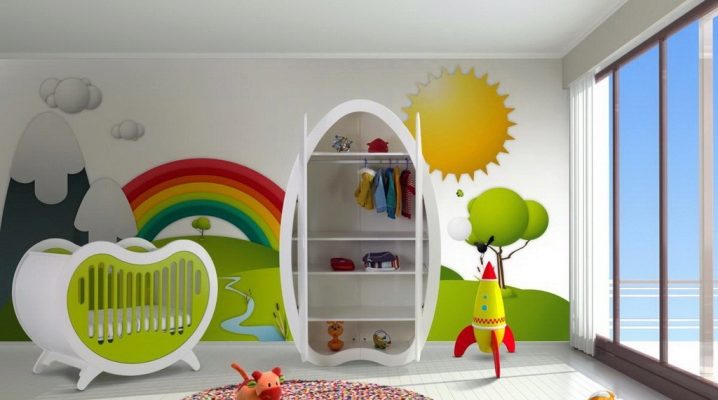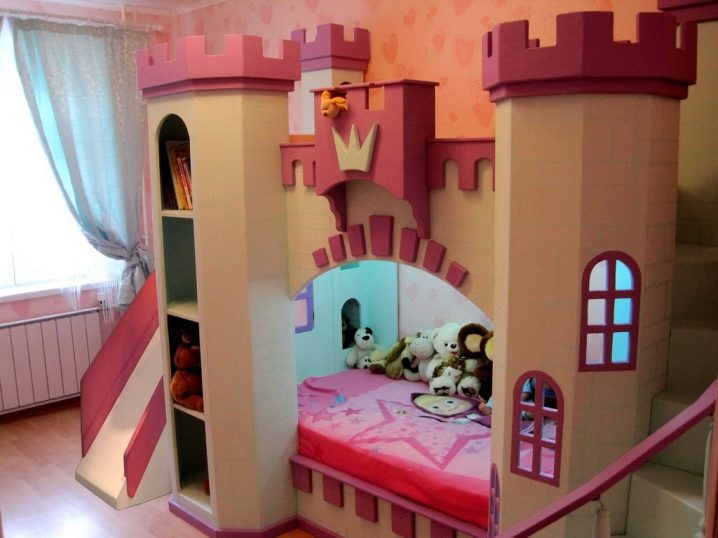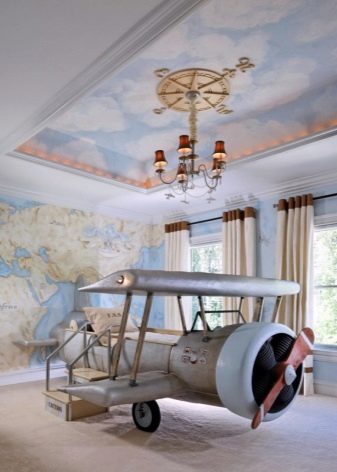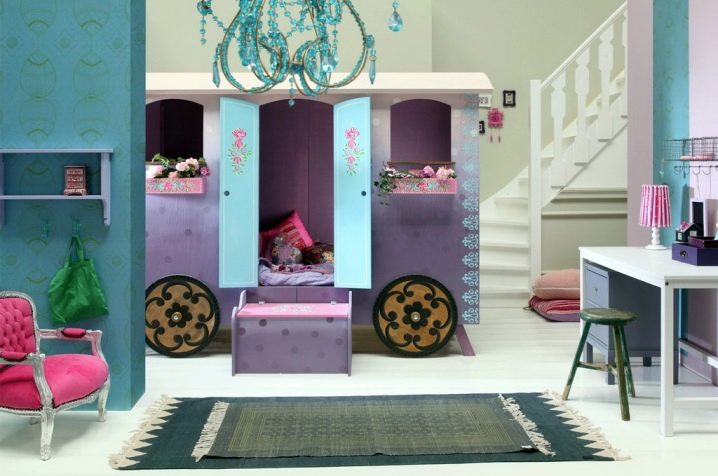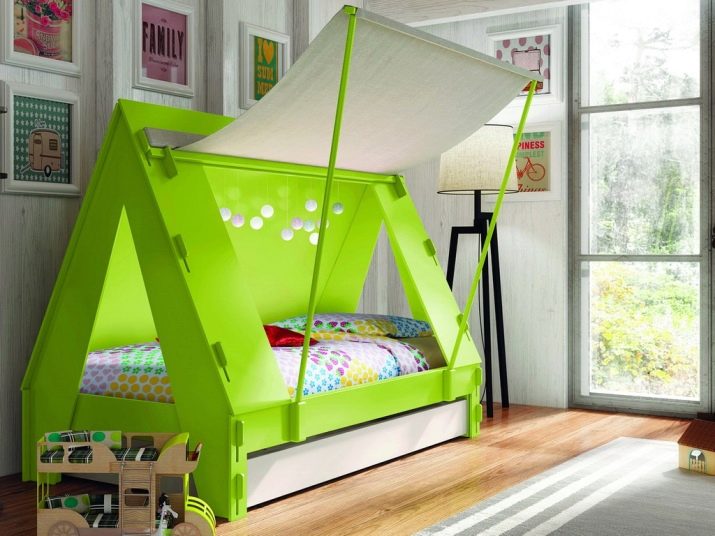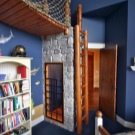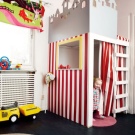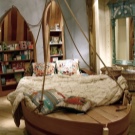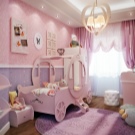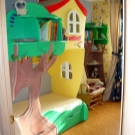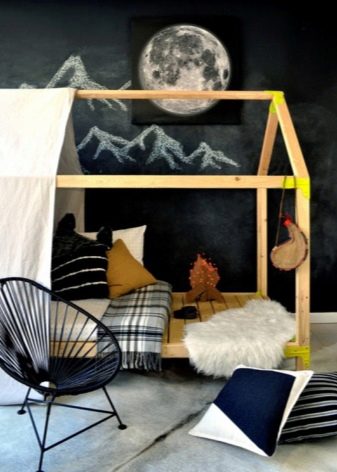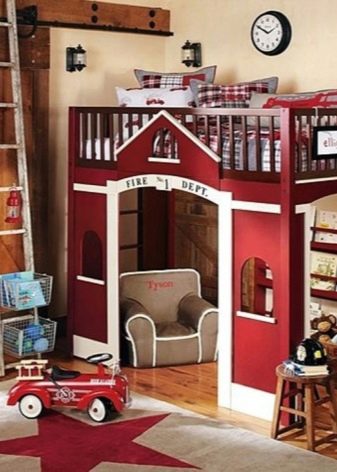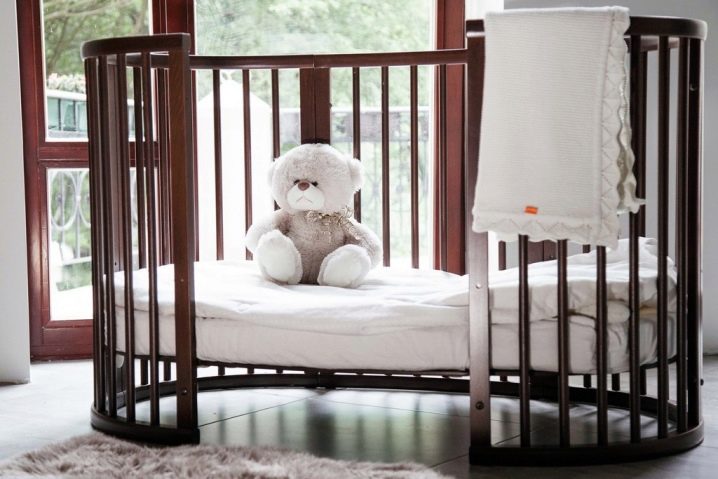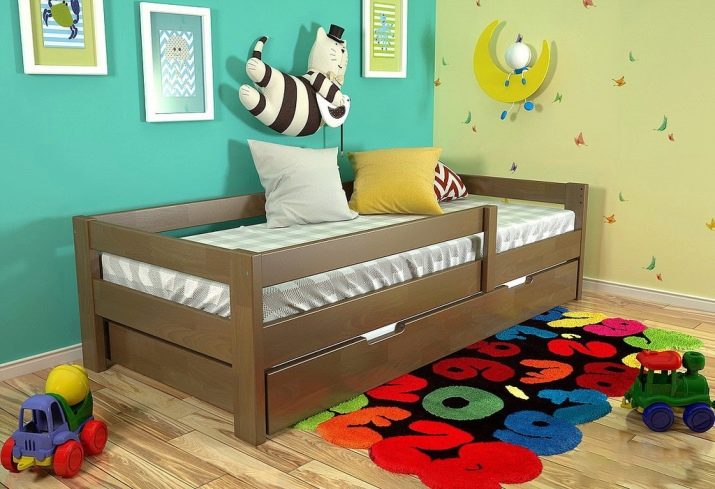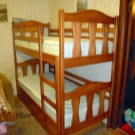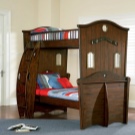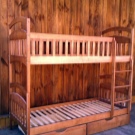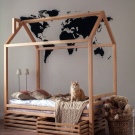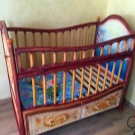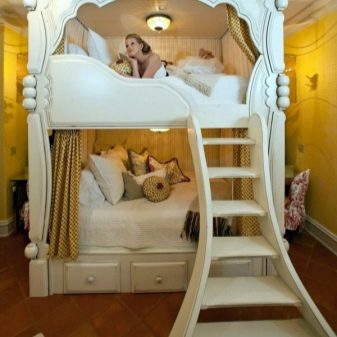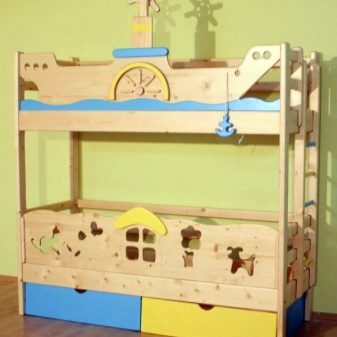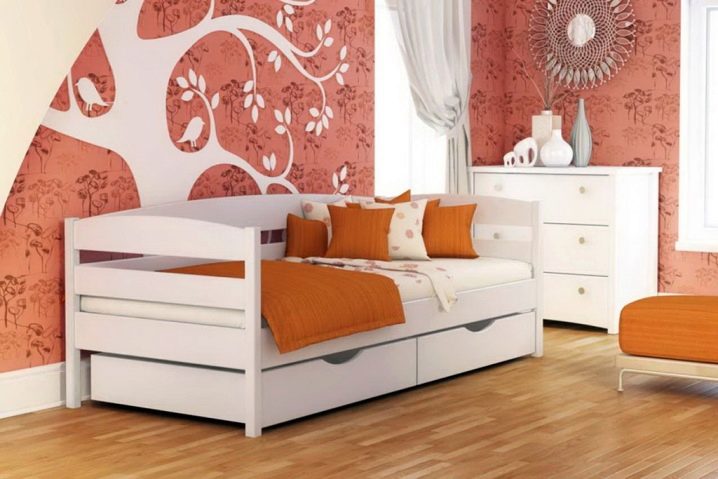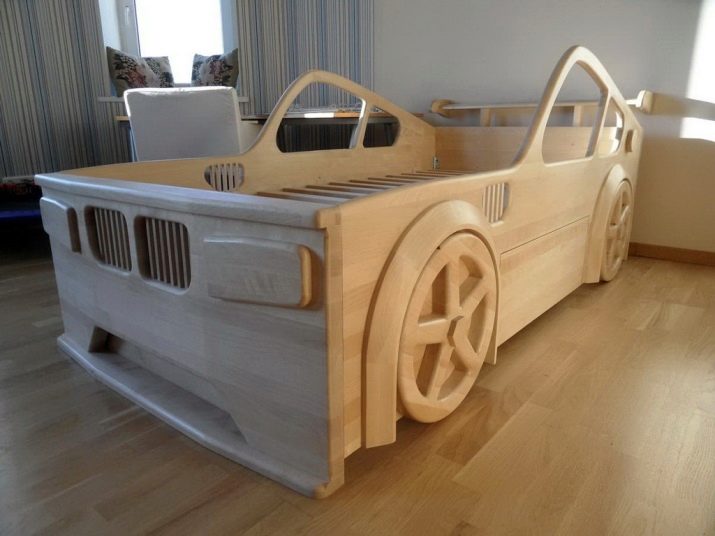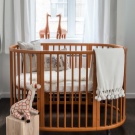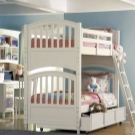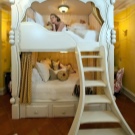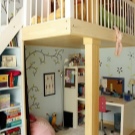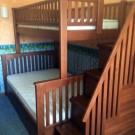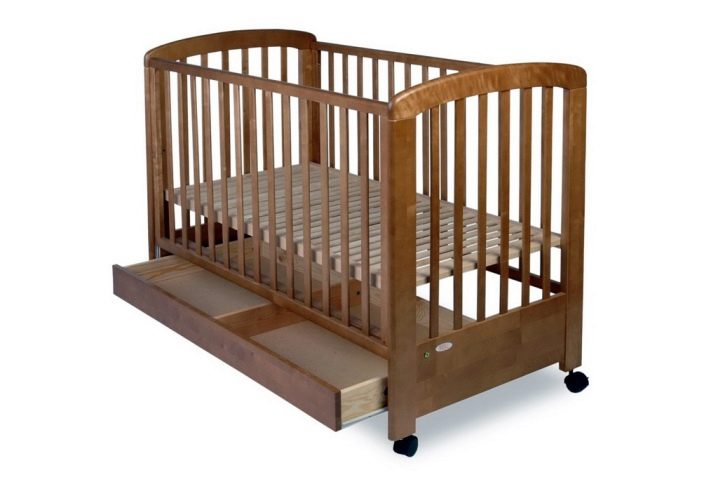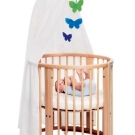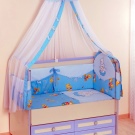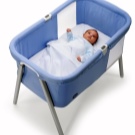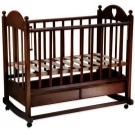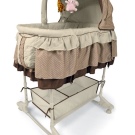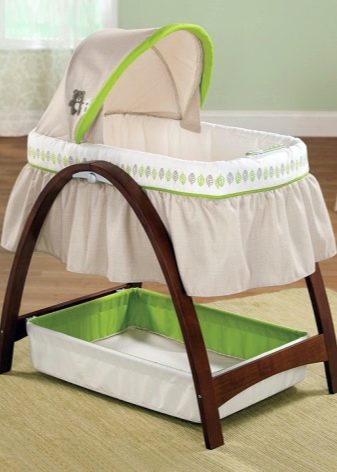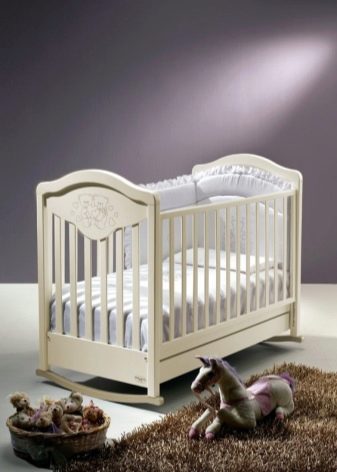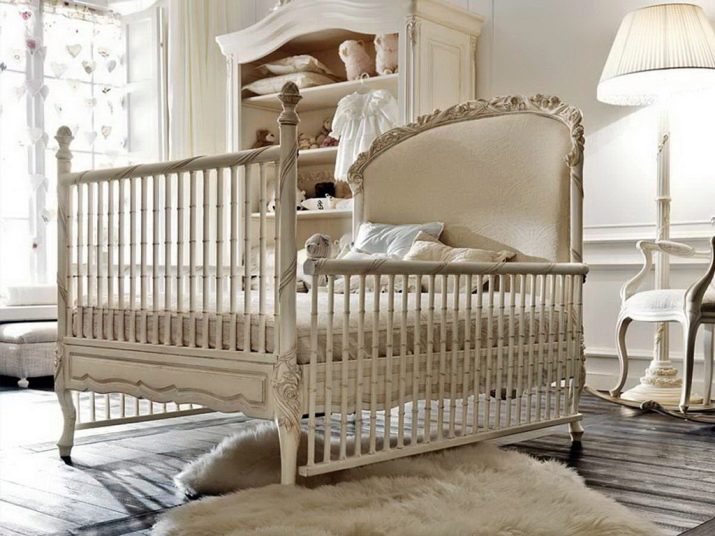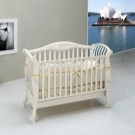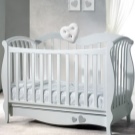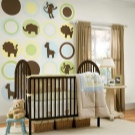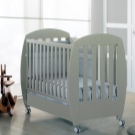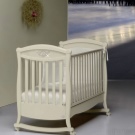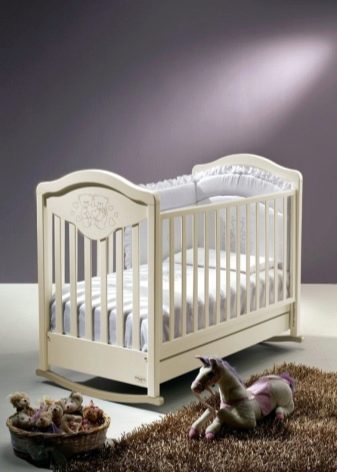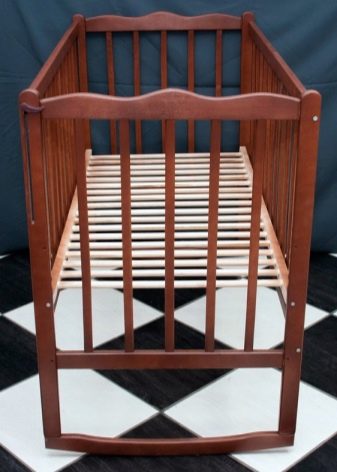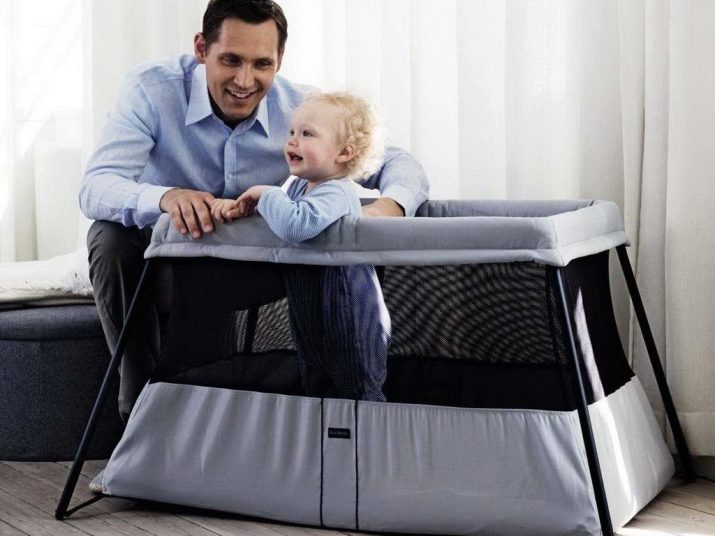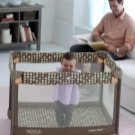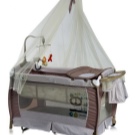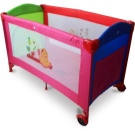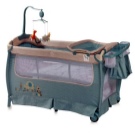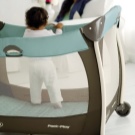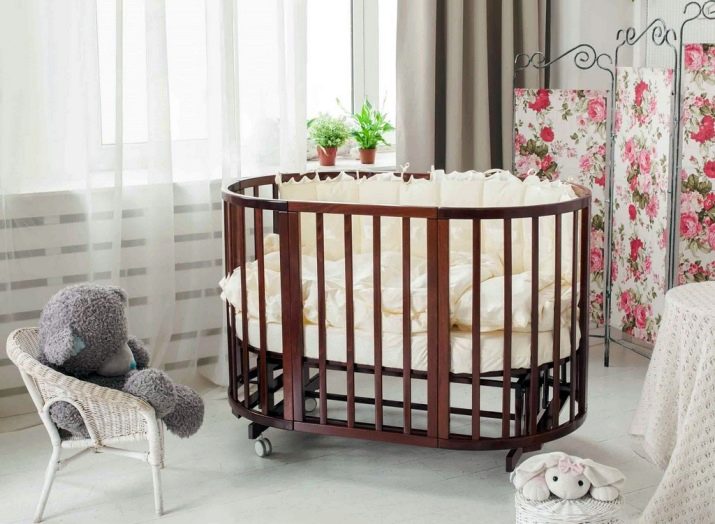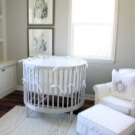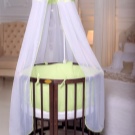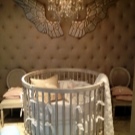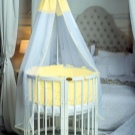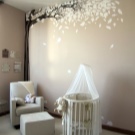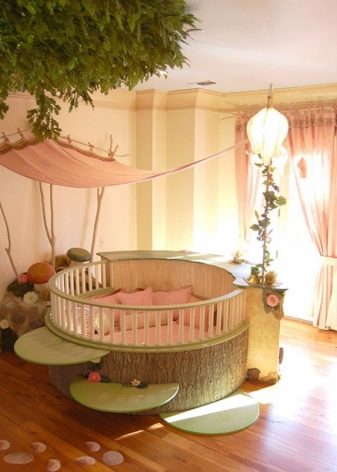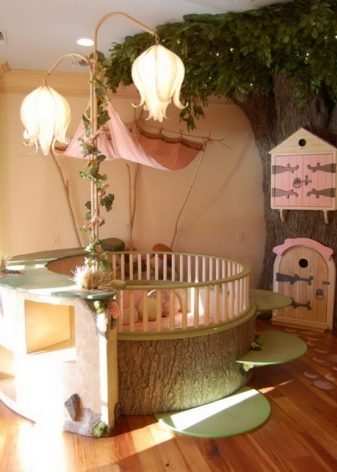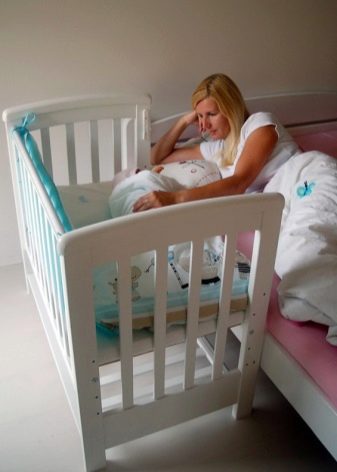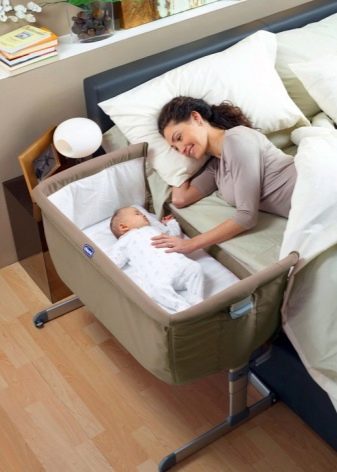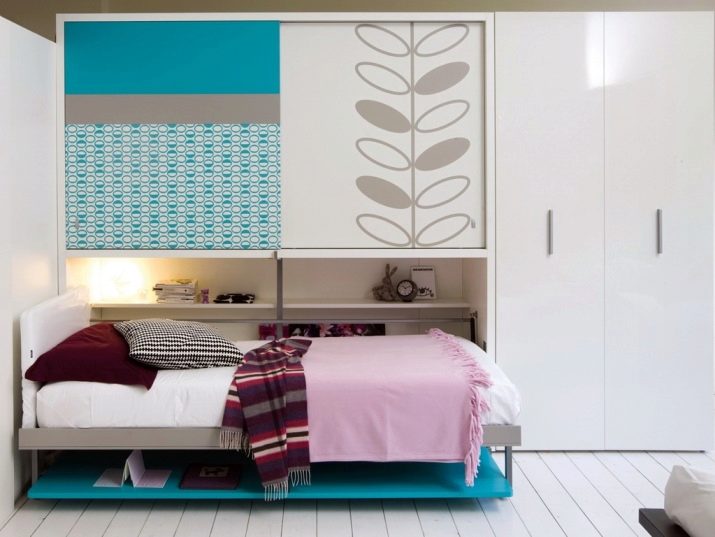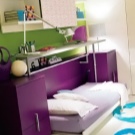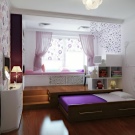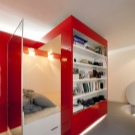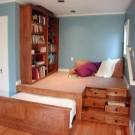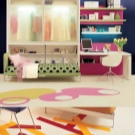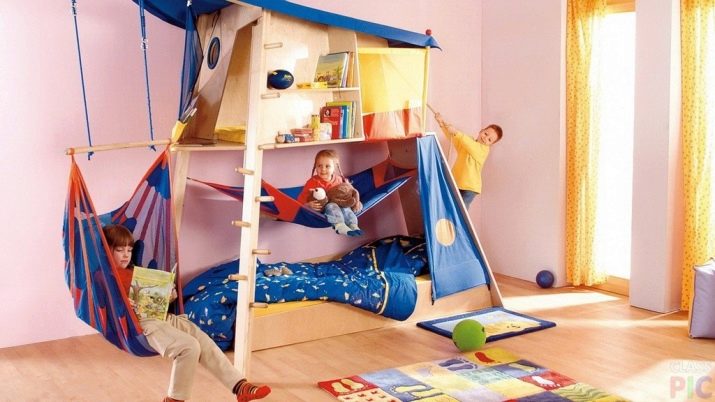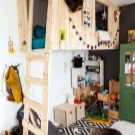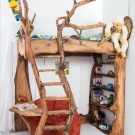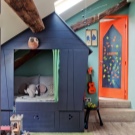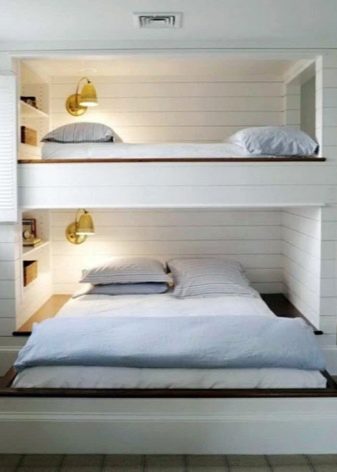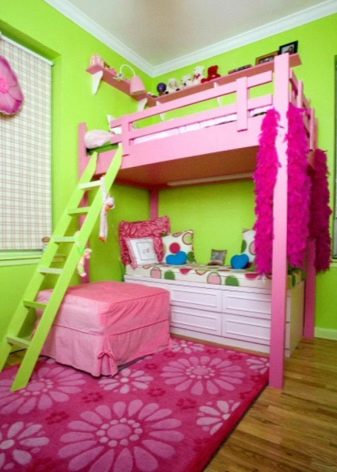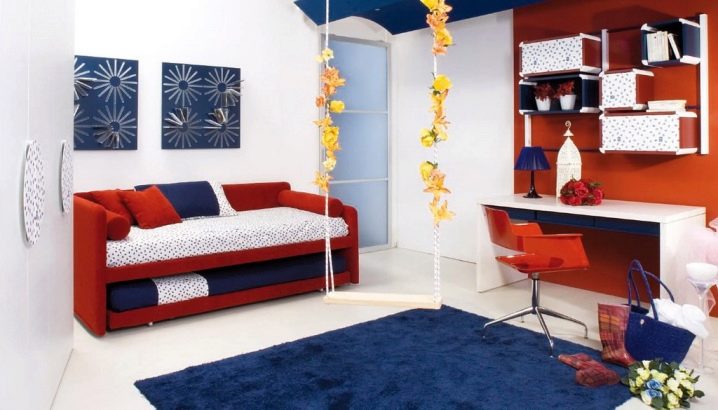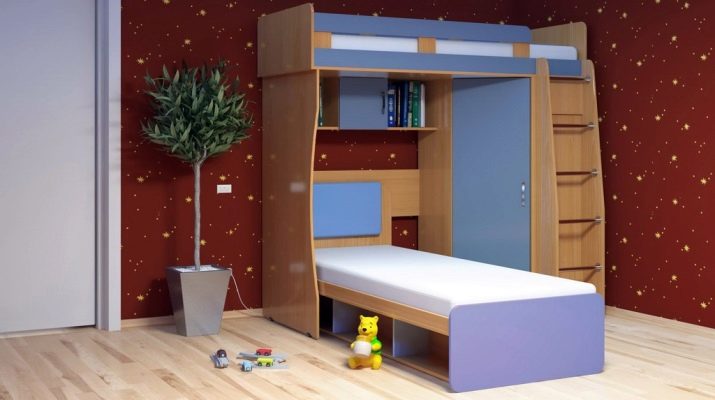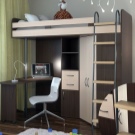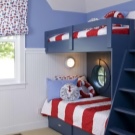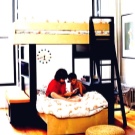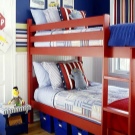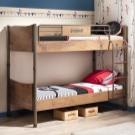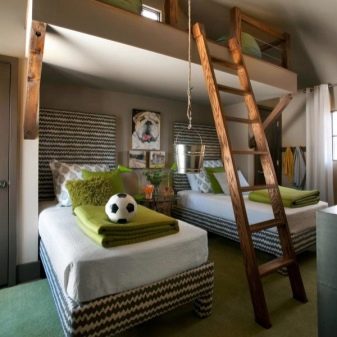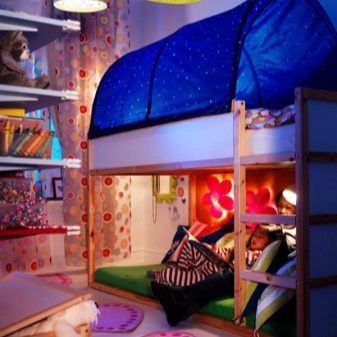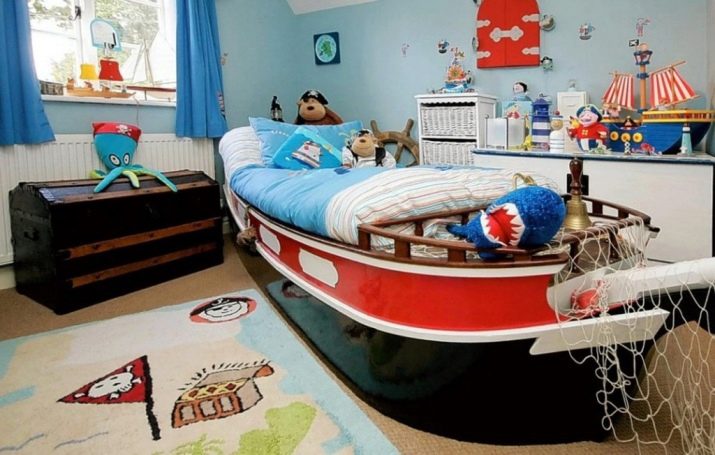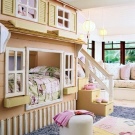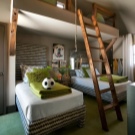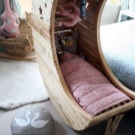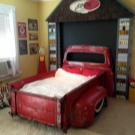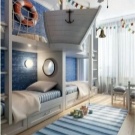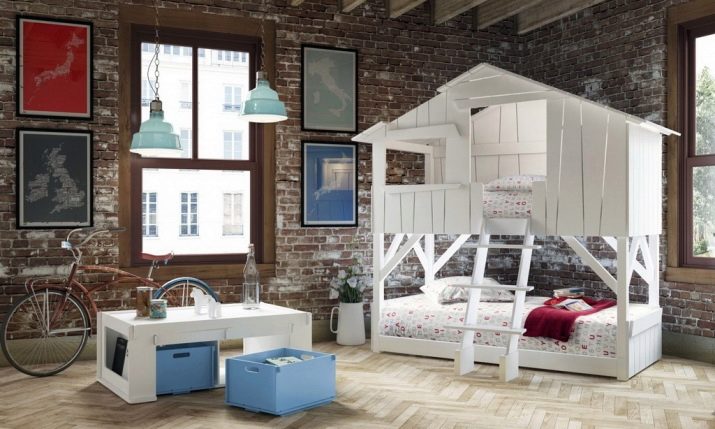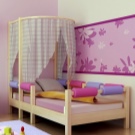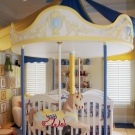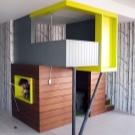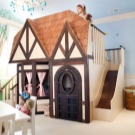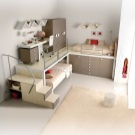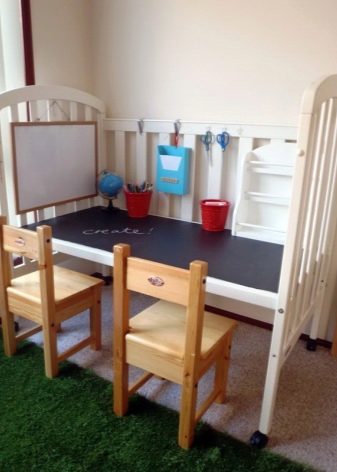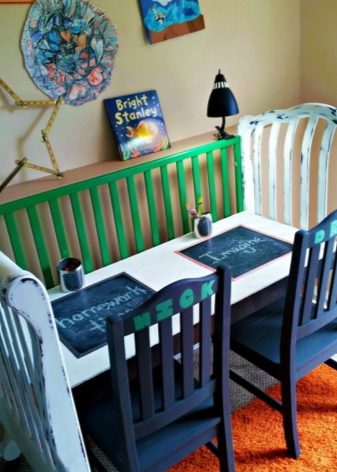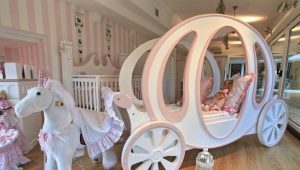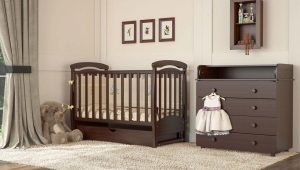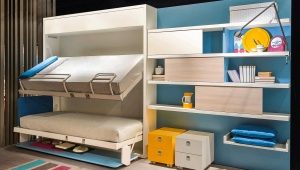Crib sizes
Children often copy the actions and habits of adults, and, moreover, they are not always useful - to lie on the bed with a gadget, watch TV lying, listen to music, read. Yes, just jump, indulge, chat with a friend or mom (dad). It is clear that the choice of a bed for a child should be taken very seriously.
General requirements
What you need to know when choosing furniture for the children's room? There are some fundamental points.
- First, the size of the crib is matched to the growth of the child and his age. While the child is small, special attention is paid to the height of the base and the presence of protection against a possible fall during sleep.
The length of the baby bed is calculated as follows: 40-50 cm is added to the growth of the child, so that the baby has free space both above and below. The width of the bed, too, should not be too limited, especially for small children, because they sleep, arms outstretched, often tossing and turning in their sleep, learning the whole space of the bed.
- Secondly, the sex of the child.Now there are many different models of cots, designed specifically for girls or for boys. The design they have very different. The task of parents is not just to buy the model they like, but also to check it for compliance.
- Third, the family budget. Not every family can afford to change a children's bed every couple of years. Indeed, in early childhood, the baby can grow 10-20 cm per year, children of school age - 5-6. This circumstance must be remembered when choosing a bed “for growth”.
All attention to safety
A prerequisite for a baby cot is its safety. When choosing this piece of furniture, consider the following:
- The height of the base can be adjusted. For infants, the topmost height of the bottom is suitable so that it is easier for parents to remove / put them. The baby began to get up - the bottom must be lowered so that the baby does not fall out of bed. It is necessary that the side back was removed, so the baby himself can get out of the bed.
- The minimum gap between the slats of the crib walls is 2-3 cm., The maximum is 7-8, in order to exclude the possibility to stick your head in there and get stuck there.
- For the bed is important strength and stability. It is better to check all the details for strength before purchasing children's furniture. No cracks, dents or any other structural defects are allowed to avoid the risk of breakage.
- No sharp corners, carved decorative ornaments, otherwise there is a high risk of injury to the baby.
- From the bed should not smell anything.
- Corner joints have the same height as the side of the bed, the permissible protrusion is not more than 2 mm.
- The headboard and foot of the crib without decorative holes, so that no part of the baby’s body is stuck there.
- The upper slats of the side walls of the bed (in the lowest position) should be at least 65-70 cm above the top edge of the mattress.
Beds with side walls are also necessary for grown-up children, as the risk of the child’s falling remains. The sides are called small fencing, occupying a third part of the length of the bed. They can be wooden and plastic, removable and stationary. They should be fixed securely, because the child will definitely use them as a support.
It should carefully choose a place for the crib. Usually it is placed against the wall, away from the window and heating devices.
Materials
A very important criterion for finding a baby bed is the material from which it was made. The best time-tested option is considered a tree. This natural material breathes well. Hardwood is preferable, although more expensive. It remarkably gives in to grinding and polishing that protects the child from splinters. Plus: a wooden cot is easy to clean, dries quickly.
A bed of pine will be a more budget option, although it is softer and there may be traces of baby’s activity on it: marks from teeth, scratches, dents from rattles.
In addition to wood, plastic, metal, chipboard, MDF, and chipboard are used in the manufacture of cots. The main condition for such materials is the absence of toxins.
There are models of beds made from different materials. For example, plastic is combined with wood or metal. It is used to create walls at the head and foot of a children's bed, because plastic is easy to give any shape, to paint in the desired color. These options are not so bad if made of quality material.
MDF (Medium Density Fiberboard) is a durable material, quite reliable and safe.Often used to make baby cots.
Chipboard (chipboard) for strength inferior products from MDF. The main disadvantage of this material is the use of formaldehyde in production. Although beds from this material are cheaper than others, it is not recommended to buy them, because the health of the baby is more expensive.
Currently, the mass segment of furniture, including for children's rooms, is represented by inexpensive furniture made of laminated chipboard (laminated chipboard). Thanks to the decorative-protective layer applied to the slab in the form of a paper film coated with melamine, this material is able to imitate any texture.
Since products made of laminated chipboard can be difficult to distinguish from models of real wood, it is necessary to find out from the seller what material the crib is made of and check for quality certificates. After all, LDSP also emits formaldehyde, and this is a very harmful gas to health.
Replacement rules
Usually, children's beds are changed at least three times before the child reaches 18 years of age. At first it is a cot with high sides. As the baby grows up, the bumpers are made lower or some ribs are removed,to enable the child to get out of the crib.
By three years the growth of the baby does not allow to put him in the crib. It comes time to pick up a bed, the size of the age of the beloved child. At this time it is still too early to get a big bed, so the children's furniture complex becomes the optimal solution. The service life of such furniture can reach 10 years.
The child became a teenager, so it's time to change the furniture in the nursery, the bed first. Depending on the size of the family budget, either an adult bed or a new furniture complex with a teen design is purchased into the room of a son or daughter.
Standard sizes by age
In Russia, according to the requirements of GOST, the following standards are established for children's sleeping places:
- The beds, designed for children from birth to 3 years, have a bed size of 120 x 60 cm, walls height up to 95 cm. The height of the bed in the upper position is 50 cm, in the lower position - 30. The base is used lamellas, dimensions increase to 128 x 68 cm. If the baby is not large, such a bed serves him up to 4 years. European standards are 5-10 cm larger than Russian.
- The size of the crib, intended for children from 3 years old to 6 (preschool children), is 140 x 60 cm, height from the floor is 30 cm.
- Beds for teenage students have a standard size of 180 x 90 cm, and the height of the base is 50 cm.
From 0 to 3 years
A large variety of designs for cots leads to the problem of the choice of many young parents, especially those awaiting their first child. Therefore it is necessary to deal with the main types of models intended for children from birth to 3 years:
The bed-cradle - a small bed (cradle), usually on high legs, with the possibility of rocking baby. Although the crib is designed for babies up to 6 months, you can practically use it until the baby starts to turn over actively. This usually happens by the 3rd or 4th month. Already at this age there is a risk of overturning the cradle.
The material from which cradles are made can be different: wood, metal, plastic, wicker vine, chipboard. Depending on the price of beds, cradles, their equipment may vary. In simple models, the hands of parents serve as a mechanism for lulling a child; the more expensive ones are equipped with an electronic system of pendulum motion sickness, music and light accompaniment, and bright hanging toys.
The main advantages of cradles can be called their compactness and lightness. Having small dimensions, they are easily rearranged to another place. The cradle for the baby is an imitation of my mother's abdomen, which gives him extra comfort and makes sleep sound and peaceful.
The disadvantages of this bed can be attributed to a short life. After all, the child will grow out of the cradle pretty quickly.
Classic bed is the most simple, time-tested model. Around the perimeter there are bumpers consisting of laths. One side side is removable, it can be lowered or removed altogether. The standard dimensions of such a bed (120x60 cm, 140x60 cm), an adjustable base allow the baby to sleep in it until the age of three. However, if the bed is not equipped with wheels, it is quite difficult to move it alone. The function of motion sickness in this modification is missing.
A variation of the classic version of the crib for small children is rocking. The rocking of the baby in it occurs due to the presence of runners, or pendulum mechanism, swinging the bed. The presence of a lock is requireddesigned to prevent spontaneous rocking. If the rocking chair is equipped with runners, removable wheels act as fixers, which is not very convenient. To fix the bed they have to be screwed regularly. However, if the wheels in the configuration is not provided, this will reduce the life of the bed.
Bed arena. Typically, these beds have fabric walls with inclusions from the grid. This combination in one design of a classical bed and an arena. It helps this kind of bed on trips, because it can be disassembled and compactly put in a small bag. At night, playpen is used for sleep, and during the day - for the game. Since playpens are also used for games, bright colors and various images prevail in the colors.
Round beds are another modification of the classic crib. Very popular today. It is believed that the advantages of her much more. A round or oval bed can be placed in the center of the room, which will extend the view to 360 degrees. It is safer due to the lack of sharp corners. It is possible to approach the crib from either side. For a child, this form is more comfortable.
Modern manufacturers offer round or oval-shaped cribs in various sizes, with the possibility of additional equipment. There are several sizes in accordance with the age of the child:
- babies are offered a cradle with dimensions of 90x45 cm. By six months, the baby will grow out of it.
- A child under 3 years old has round beds with dimensions of 120x60 cm or 120x65 cm.
- For the preschooler, comfortable oval beds with dimensions of at least 140x70 cm are provided.
Extra beds
This type of beds is designed to ensure a peaceful family sleep together, since both parents and the baby are sleeping in their places while they are nearby. It is enough to remove one side and put the baby’s bed close to the parent. This is a very convenient and practical option, well suited for small bedrooms.
The size of this type of children's furniture also vary. For babies, manufacturers offer additional beds of small sizes - 90x60 cm. A variant with parameters 120x60 cm. Will last longer, since suitable for a two year old baby.
Attachments to the parent bed are provided in the kit for side cots.The height of the baby’s bed can be adjusted from 30 to 50 cm, adjusting to the height of the adult bed. If you return the side rim in place, you get a separate bed for a baby.
There are additional beds and minus: they are operated for long. 1.5-2 years, and the child will need a new bed.
Transforming bed
Transforming beds are becoming more popular due to the service life (up to 12 years). Sleeping in such models grows with the child. A cradle, a changing table, shelves and a chest of drawers can be included in the standard package. Over time, high sides are removed, a chest of drawers is placed next to the bed. Due to this, the size of the bed increases by 60-70 cm.
The advantages of transforming beds include:
- multifunctionality.
- saving space.
- long time use.
There are such beds and disadvantages:
- high cost, since the bed is equipped with several pieces of furniture;
- considerable weight. Move a transforming bed to one person is not under force.
For preschoolers
Beds for children of preschool and primary school age already look more like adult furniture for sleeping.Differences are the size, color, design of the sides and headboard. Beds are still made without sharp corners, but the colors are pleasing to the eye with their brightness. Since the main activity of the child from 3 to 7 is a game, the beds turn into fabulous castles, carriages, cars, ships (pirated or space), yachts. Fantasy designers know no boundaries.
Standard bed sizes for preschool children, while maintaining a width of 60 cm., Increase its length up to 140 cm., Height - 30 cm. Parameters 160x80 are recommended for children taller or older at a height of 40 cm.
Furniture sets for children, besides a bed, with lockers, drawers, shelves, a ladder and even a sports corner are very popular. The dimensions of such furniture are seriously increased. Its height is 150 cm, the place for sleeping is 170 × 70 cm / 170 × 80 cm, the area occupied by such a children's corner is 180 × 80 cm / 180 × 90 cm.
Since there are quite a lot of manufacturers of children's furniture, and children are rarely the same, bed sizes for children can vary. And you can order a bed of the desired size, for this by increasing or decreasing the width / length of the bed, for example, up to 160x70 cm.
For teens
Beds and furniture for teenagers are almost the same size as adult furniture. They differ in appearance and color. Standard teenage bed corresponds to an adult single, having a length of 190 cm., A width of 75-80 cm., A height of 45 cm. Adolescents who do not meet the average parameters for height and weight are picked up larger beds, for example, 90x200 cm or made to order.
The classic furniture complex for a teenager includes a bed, a table, a wardrobe, which allows to save space significantly.
It happens that neither the size of the apartment, nor the family budget do not allow the child to buy a full crib. In this case, the parents acquire small-sized sofas for a 7-year-old child.
Bunk bed
This option of the bed is great for families with at least two children. Bunk beds are the same size as regular beds. The distance between the floors is 85-90 cm.
A bunk bed can also be purchased for one child. Then you can sleep at the top, and below there is a place to store things, for games, a desk. But there are age restrictions for the use of such beds: children under 3–4 years old are not recommended.
The advantages of a 2-tier bed:
- Space saving.Two beds take the place of one. A good option for small apartments.
- Due to the variety of models, the bed can be chosen for any interior.
The disadvantages include:
- Insecurity. The child may fall from the ladder or from the top tier. Therefore, it is worth choosing a bed with a staircase with wide steps and handrails. The berth is equipped with a high protective side.
- The cost of a bunk bed is always higher than a single bed.
- The likelihood of disputes between children for a bed.
Custom models
Now you can not just choose a bed from your favorite collection in the store, but also order it according to your individual sizes, sketches. This is especially true for those families who live in small apartments or, conversely, in large houses. You can make an original bed of non-standard sizes and designs.
Among the non-standard models of cots can be identified:
Loft bed. Such beds are very popular with children and there are various modifications. In the "attic" a sleeping place is arranged, at the bottom - a play or work area, a sports corner, a locker or a dresser for storing things.You can descend from the attic by a side hill, a rope or a pole (like sailors). Climb up has to be on the Swedish wall, rope, ladder.
Transforming bed of various types. You do not know what size of bed to choose for a child? In this case, helps the transforming bed. It is not only the most different forms (circle, oval, square, habitual rectangle), changes size, but also has a number of additional devices. Very comfortable beds with drawers, which are often located at the bottom in one row, or 3-4, turning into a full chest.
Bunk roll-out bed is different from the standard model height. The second floor is much lower than the usual 2-tiered, and to create a second bed, the lower bed extends from under the upper one.
Bed-table, bed-sofa is preferable for teenagers, when the nursery begins to be used as a living room for receiving friends.
Choosing a bed for a nursery is not only fascinating, but also requires a well-thought-out solution. After all, it depends on her full rest of the child, which is necessary for his health.
